Through dreams, visual trickery of commonplace things, and creative imaginings, Surrealism as an art movement established a rarefied presentation of artistic practices. Though mostly associated with dream-like and absurdist images, Surrealism is in fact rooted in political resistance. It can be traced back to the years after World War I, mainly as a reaction against the war’s rational inception, during which it started in literature and spread in different artistic mediums, adopting an irrational alternative.
As Surrealism is now in its centenary, Thrive Art Gallery’s year-ender exhibit titled “Tayog-Tayog: The Ilonggo Imagination” celebrates an art movement that has influenced the methods and stylization of artistic mediums in ways beyond the normal and usual, cementing its legacy in a culturally diverse world.
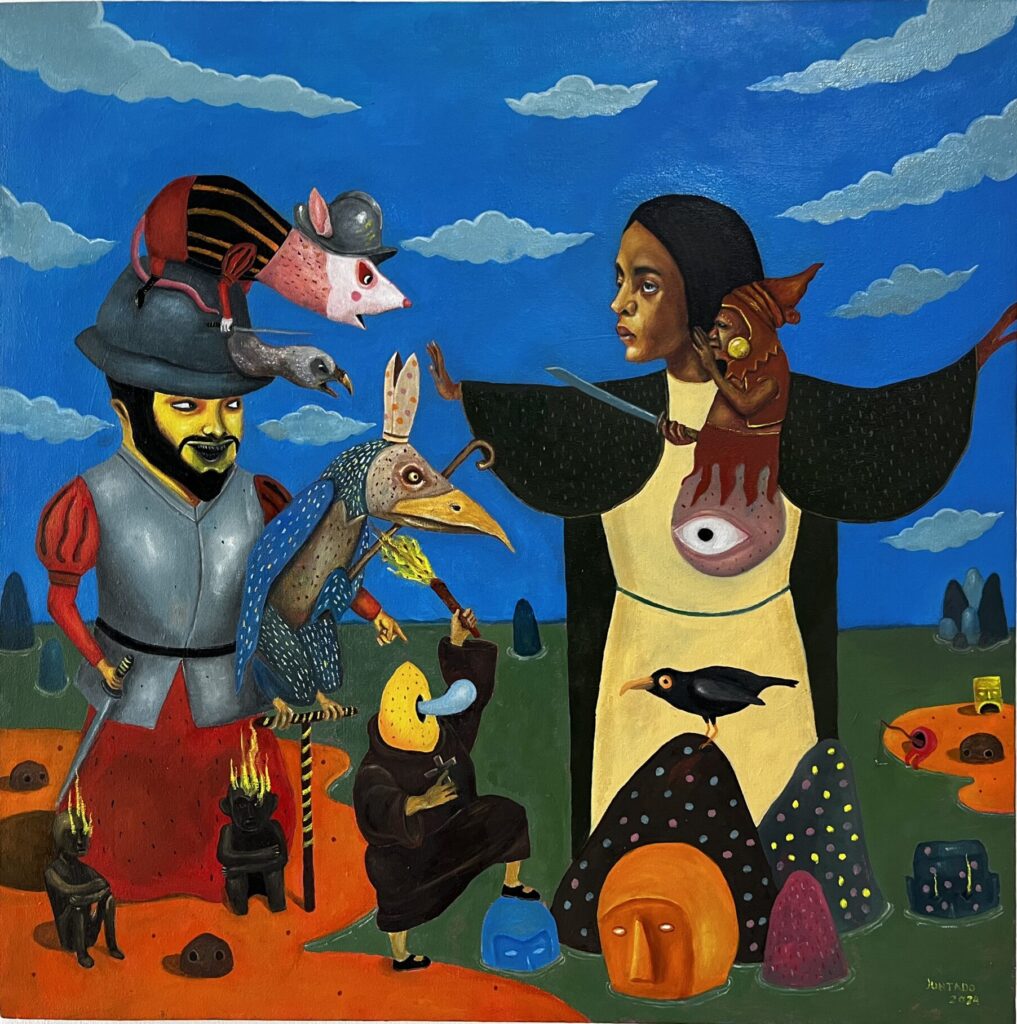
Mental space and the conscious surface
Carlo Juntado’s “Adventures of the Atomic Dwende” narrates a colonial calumniation of local culture in favor of the Spanish Conquistadors’ greed for land and riches. Using bold colored figures with flat opacity and a leveled background similar to the Surrealist technique of mental space, it shows a Spanish civil guard and a friar supplant with Christianity the local beliefs on folkloric deities.
Juntado’s depiction of cultural subjugation melds with his work “River Highways,” a fantastical take on the developmental aggression, the whim of those in power, and the consequences it has on the cultural and environmental welfare of cities and its people in the path of progress.
Though this could also be a harmless portrayal of the beautified rivers and the recreational development that comes with it, the sea creatures at the bottom of the stage speak horror otherwise.
Both works showcase a dialectically specious approach to historical and contemporary accounts: bright and colorful in its appearance yet sinister in its meaning. These give viewers a relatable understanding of what Surrealism is supposed to be, that despite its challenging figuration there is a conscious surface that touches a certain political sensibility.
Juntado’s propensity for history and the bizarre took a philosophical turn in his “Dangling Conversation,” which presents a visualization of the Chinese novel Journey to the West. The element of metamorphosis, different from an anxious Kafkaesque perspective, as this Buddha personification in caterpillar body, his encounter with the fox and the aquiline Yue Minjun imbues a Zen oneness with nature, hints to Juntado’s interesting career from his former profession in psychiatric medicine to his current artistic pursuit.
His conversation with a known art figure of Cynical Realism and a fox may suggest his ongoing study of how to tread the path he has chosen, the societal traumas he has to face, and how he has to resiliently interpret these through his works.
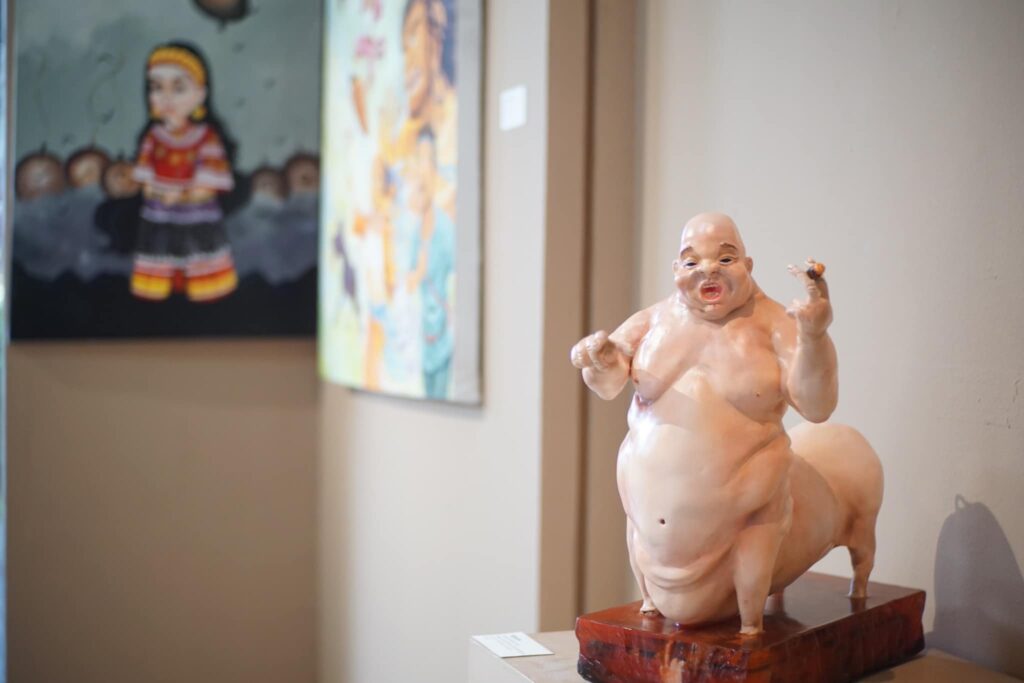
Sculptural transmogrification
Being the sole sculptural piece in the exhibit would mean the work must wax lyrical, so as not to drown among the other artworks. This was strongly evident in Rolando Manuel Jucar’s piece titled “Tigbaliw,” which means “to transform.”
A tattoo artist by profession, Jucar molds resin into sculptures, half his time when inked clients are spare. Most of his works are variations on figurative portrayal of people and fictional characters, “Tigbaliw,” on the one hand, is a biomorphic hybrid commenting on the political landscape of the country.
Social realist in form, it innocuously represents a corpulent and decadent man holding a cigar, however on closer look, it is a surreal transmogrification of a beast and man standing on top of death.
The resin sculpture shaped and painted as to represent a human figure in its initial stage of transformation into a pig, a version of what many Filipinos believe as an “aswang” in animal form, is pedestaled on a rectangular bloodbath of human bones. “Aswang,” an evil, shape-shifting creature of Filipino folklore, is historically linked to the Spanish vilification campaign against Filipino revolutionaries and its armed resistance.
Jucar intended “Tigbaliw” as a symbol of corruption and abuse of power, that most Filipinos in societal authority, be that in government or in corporations, are in fact the “aswangs” of the current times, feeding on the hard work and labor of the Filipino people.
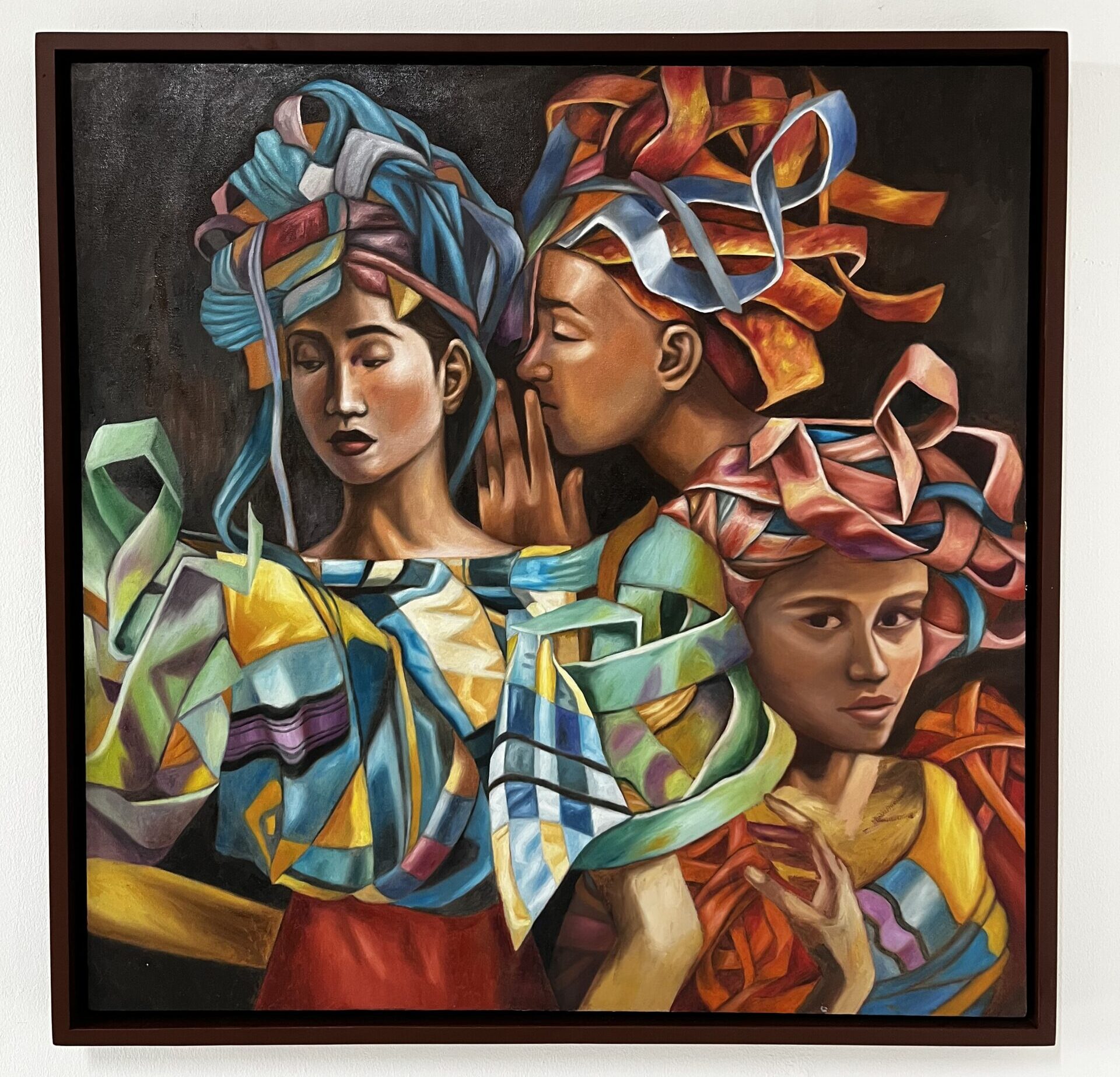
Narrative of resistance
Kristoffer Brasileño’s piece titled “Hutik sa Kagab-ihon” is not so much a Surrealist work as it is a Realist figurative representation of Filipinas and indigenous Filipino textiles. However, in depicting realism in an undertone, from its color hues and suggestive title, it exudes a surreal feeling in a way.
The undertone in color may be in line with the weft and warp weaving technique, which always has a muted result. The muted color surreally aligns with the work’s title “Hutik sa Kagab-ihon,” which translates to “whispers in the night.” The aforementioned night depicts a quiet scene of human interaction, however the moonlit glow on the face and the flow of colors suggest a dissenting disquiet.
There is also a furtive flow between the night and the whispers — it plays along the historical role of most women during the resistance against Spanish rule, if not armed along the men, they act as conduits of tactical information against the Spanish military.
“Hutik sa Kagab-ihon” could also be a simple act of cultural bequeathing of traditions, passed down from one generation to another. Incidentally, Iloilo was once the textile capital of the country, producing hand-woven textiles made from abaca and piña—a tradition befitting as an influence on Brasileño’s art.
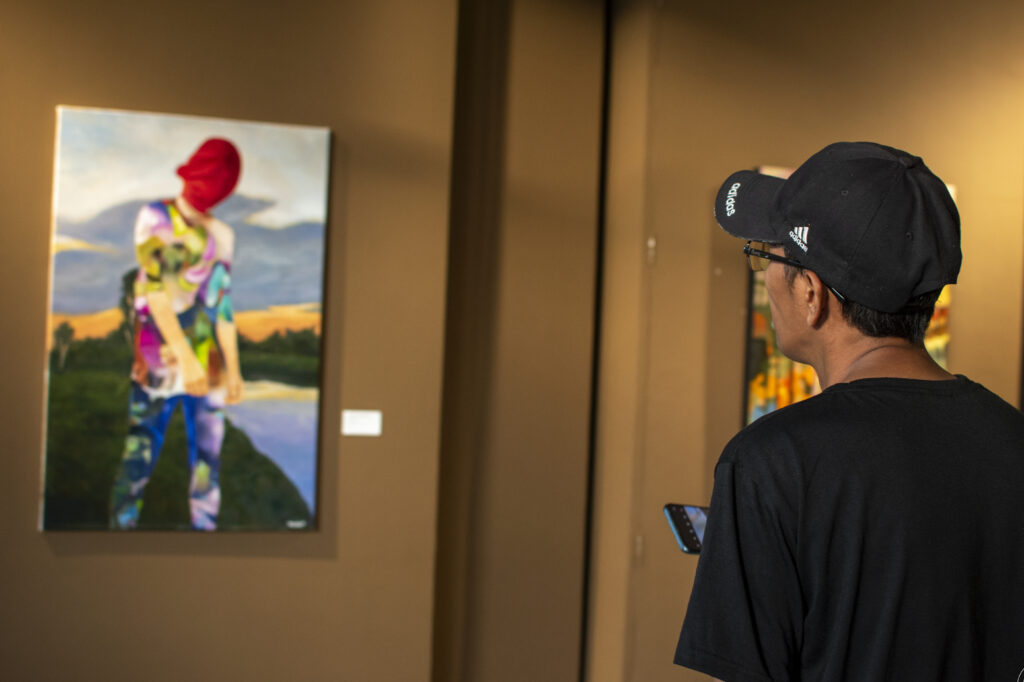
Axiomatic walk
“Human Experience” by Anza Palma is a standout, a sole figure with his face and head entirely covered with a red wrap walks in the middle of nowhere. Palma’s work evokes a mystifying quality. Why is the figure’s face and head in a red wrap? Is this about the spate of killings in the country or in the world? What does it symbolize? However, when asked, Palma responded that the work is as the title says, a human experience.
There is a universality in the human experience. As it pertains to every human experience in this world, there are a myriad of things happening to every individual at any given time or day. Though universal, it also has its particularity, to the very details of the goings-on of each and every one.
Thus, Palma’s creative representation of the human experience through a palette of colors in the figure’s clothing. The shirt is dominated by shades of green and magenta. While the lower clothing is the typical color of jeans, navy blue, and indigo. The textured daub on the clothing implies the symbolical universality of a human experience— there is happiness and sadness, celebrations and destruction, truth and deceit, love and hate, and life and death. Though the figure’s posture and arms, and even the grayish gloom of the skies and the road, suggest a battered and struggling situation, the sunrise behind the figure and the glow of the figure’s clothing warrant hope and renewal.
The red wrap is reminiscent of the surrealist paintings of Rene Magritte with its infamous white wrap; the story behind Magritte’s is quite tragic than what Palma on the other hand intends of her red wrap— it pursues the positive idea that a human experience can happen to anyone. Though the red color usually connotes blood and violence, it also conveys courage and activity.
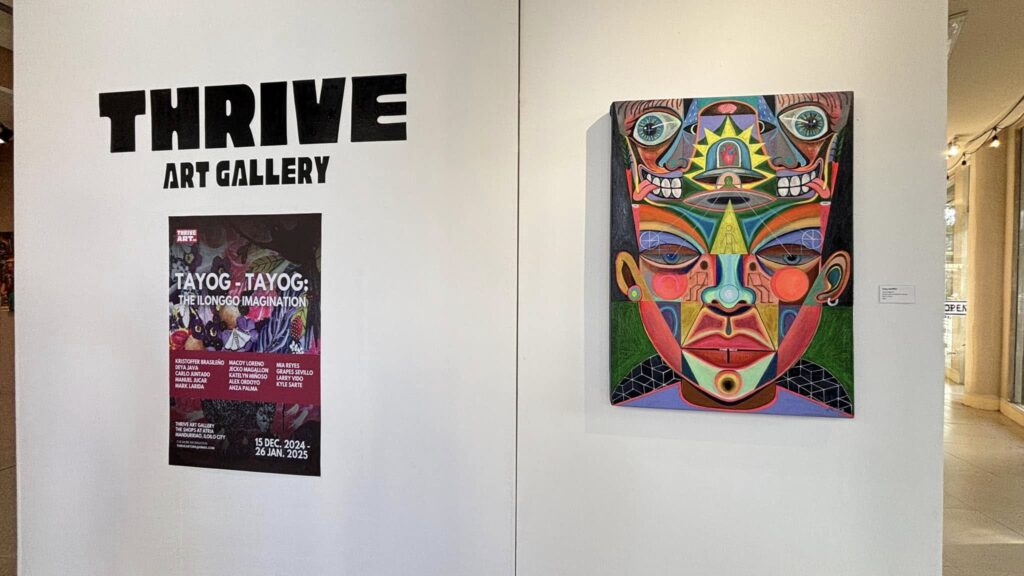
In a world that demands an immediate materiality, a relentless pursuit of actions and results, from an individual’s daily economic struggle to a continuous inflationary crisis, from an endless cycle of overproduction to the senseless mass consumption, from regional tensions to international conflicts, shouldn’t we pause, close our eyes and dream for a while?
